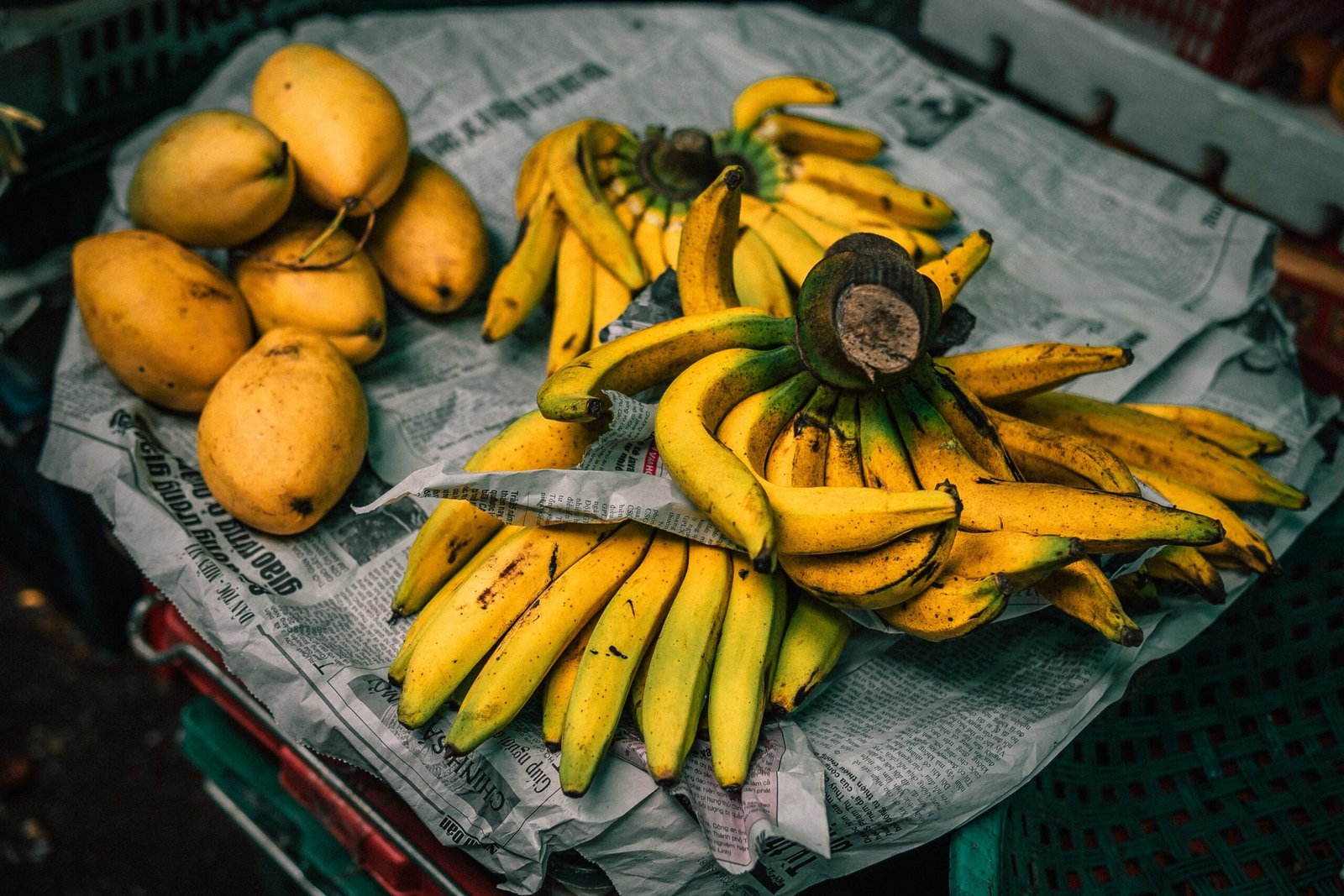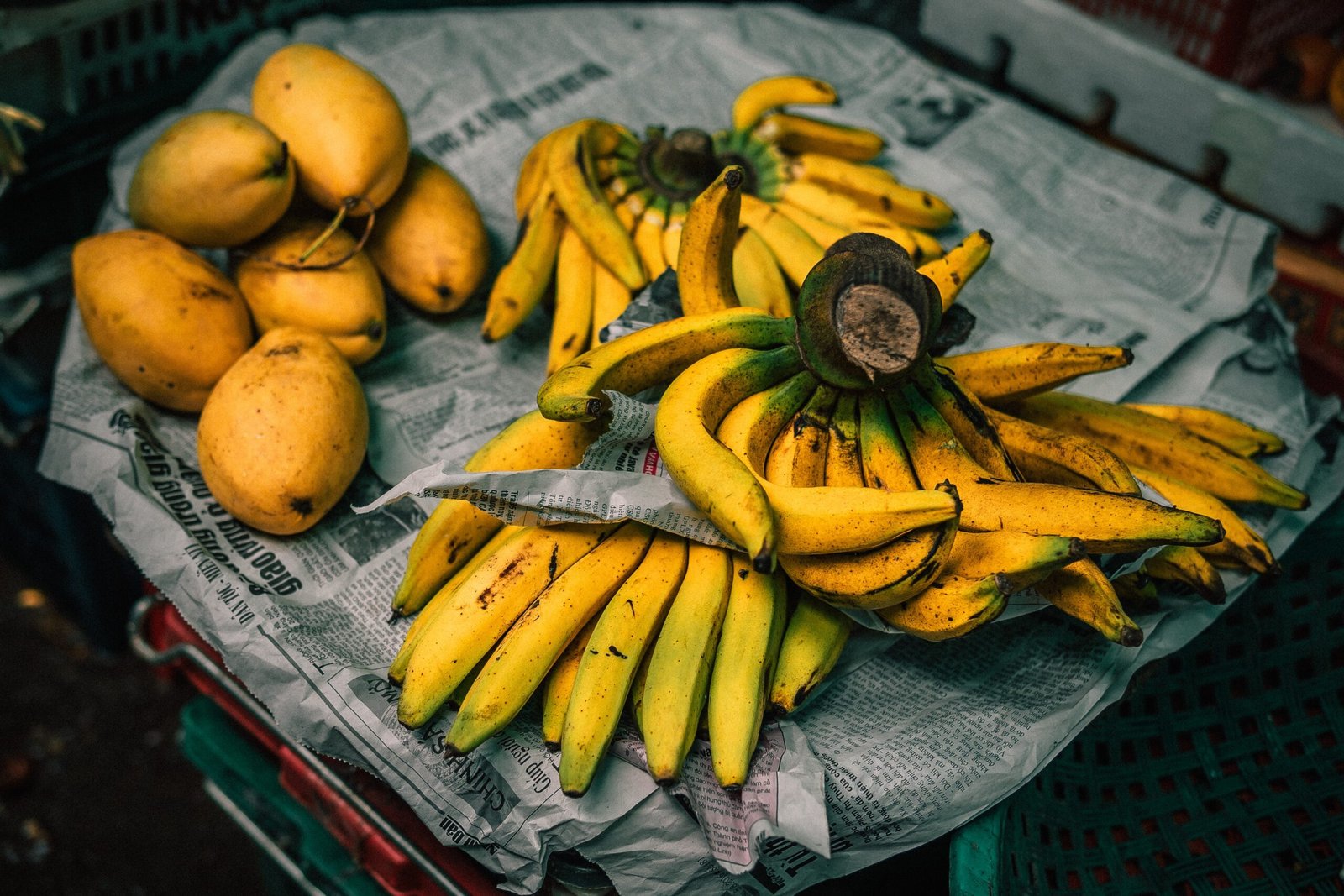Have you ever wondered which fruits contain high levels of oxalate? Look no further! In this article, we present the “Oxalate In Fruits Chart” which provides a comprehensive list of fruits and their respective oxalate content. By understanding the oxalate levels in various fruits, you can make informed choices about your diet and potentially manage or reduce the risk of certain health conditions. So, if you’re curious about how much oxalate is in your favorite fruits, keep reading!

This image is property of images.unsplash.com.
1. What is Oxalate?
1.1 Definition
Oxalate is a naturally occurring substance found in many plant-based foods. It is a salt or an ester of oxalic acid, which is an organic compound. Oxalate can also be produced by the body as a byproduct of metabolism.
1.2 Role in the body
In small amounts, oxalate is harmless and plays a role in the normal functioning of the body. It combines with calcium to form calcium oxalate, which is then excreted through the kidneys.
1.3 Potential health risks
However, consuming high levels of oxalate can lead to the formation of kidney stones. These stones are hard deposits that form in the kidneys and can cause severe pain and discomfort. Individuals who are prone to kidney stones or have a history of kidney stone formation need to be cautious about their oxalate intake.
2. Importance of Identifying Oxalate Levels in Fruits
2.1 Understanding individual tolerance
Different individuals may have varying levels of tolerance to oxalate. Some people may be more sensitive to high oxalate foods and may need to limit their intake, while others may not experience any adverse effects. Identifying oxalate levels in fruits can help individuals understand their own tolerance and make informed decisions about their diet.
2.2 Managing kidney stones
For individuals who are prone to kidney stones, identifying and monitoring oxalate levels in fruits is crucial. By avoiding or limiting high oxalate fruits, they can reduce the risk of kidney stone formation and manage their condition effectively.
2.3 Promoting a balanced diet
Identifying oxalate levels in fruits is also important for maintaining a balanced and nutritious diet. By incorporating low oxalate fruits into the diet, individuals can ensure a well-rounded intake of vitamins, minerals, and antioxidants, while also managing their oxalate intake.

This image is property of images.unsplash.com.
3. Oxalate Content in Common Fruits
3.1 Low Oxalate Fruits
Low oxalate fruits are those that contain less than 2 milligrams of oxalate per serving. These fruits can be enjoyed in moderation by individuals with a higher tolerance for oxalate. Some examples of low oxalate fruits include:
3.2 Moderately High Oxalate Fruits
Moderately high oxalate fruits contain between 2 to 10 milligrams of oxalate per serving. While these fruits are generally safe for most individuals, those with a history of kidney stones or higher susceptibility to oxalate-related issues may need to limit their consumption. Some examples of moderately high oxalate fruits include:
3.3 High Oxalate Fruits
High oxalate fruits are those that contain more than 10 milligrams of oxalate per serving. These fruits should be consumed sparingly, especially by individuals with a history of kidney stones or other health conditions that require reduced oxalate intake. Some examples of high oxalate fruits include:
4. Low Oxalate Fruits
4.1 Apple
Apples are not only delicious but also low in oxalate content. They are a great addition to a balanced diet and can be enjoyed as a healthy snack or incorporated into various recipes. Apples are also a good source of dietary fiber, antioxidants, and vitamins, making them a nutritious choice.
4.2 Avocado
Avocado is a versatile fruit that is known for its creamy texture and rich flavor. It is low in oxalate and packed with healthy fats, vitamins, and minerals. Avocado can be used in a variety of dishes, including salads, sandwiches, and smoothies, making it a popular choice among health-conscious individuals.
4.3 Banana
Bananas are a staple fruit in many households and are often enjoyed for their natural sweetness and creamy texture. They are not only low in oxalate but also a good source of potassium, vitamin C, and dietary fiber. Bananas can be eaten on their own, added to smoothies, or used in baking for added flavor and moisture.
4.4 Blueberries
Blueberries are a delicious and nutritious fruit that is low in oxalate. They are rich in antioxidants, vitamins, and dietary fiber. Blueberries can be enjoyed fresh, added to yogurt or oatmeal, or used in baking for a burst of flavor and added health benefits.
4.5 Cherries
Cherries, both sweet and tart varieties, are low in oxalate and have numerous health benefits. They are rich in antioxidants, vitamins, and minerals. Cherries can be enjoyed as a snack, used in desserts, or added to savory dishes for a delightful twist of flavor.
4.6 Grapes
Grapes are not only tasty but also low in oxalate content. They come in various colors and varieties, each offering unique flavors and health benefits. Grapes can be enjoyed as a snack, added to salads or smoothies, or even used to make homemade jams and jellies.

This image is property of images.unsplash.com.
5. Moderately High Oxalate Fruits
5.1 Orange
Oranges are a popular citrus fruit known for their vitamin C content. While they are moderately high in oxalate, they can still be enjoyed in moderation by most individuals. Oranges are refreshing and versatile, making them a great addition to both sweet and savory dishes.
5.2 Pineapple
Pineapple is a tropical fruit that adds a touch of sweetness and tanginess to any dish. It is moderately high in oxalate but can still be enjoyed by individuals with a higher tolerance. Pineapple is not only delicious but also a good source of vitamins, minerals, and enzymes that aid digestion.
5.3 Raspberry
Raspberries are small but mighty fruits that are packed with flavor and health benefits. They are moderately high in oxalate and should be consumed in moderation, especially by individuals with oxalate-related health concerns. Raspberries can be enjoyed fresh, added to smoothies or desserts, or used as a topping for yogurt or cereal.
5.4 Strawberry
Strawberries are a beloved fruit that is synonymous with summer. They are moderately high in oxalate but can still be included in a balanced diet for most individuals. Strawberries are not only delicious but also a good source of vitamins, antioxidants, and dietary fiber.
5.5 Watermelon
Watermelon is a refreshing fruit that is popular during the hot summer months. It is moderately high in oxalate but can still be enjoyed in moderation. Watermelon is hydrating and low in calories, making it a guilt-free treat that can be enjoyed on its own or added to salads and beverages.
6. High Oxalate Fruits
6.1 Blackberries
Blackberries are delicious and nutritious, but they are also high in oxalate content. Individuals with a higher sensitivity or a history of kidney stones should consume blackberries in moderation. Blackberries can be enjoyed fresh, used in baking, or added to desserts for a burst of flavor.
6.2 Figs
Figs are a unique and versatile fruit that can be enjoyed fresh or dried. They are high in oxalate and should be consumed sparingly, especially by individuals with oxalate-related health concerns. Figs can be eaten on their own, added to salads or desserts, or used to make jams and preserves.
6.3 Kiwi
Kiwi is a tropical fruit that is known for its vibrant green flesh and sweet-tart flavor. It is high in oxalate and should be consumed cautiously. Kiwi is packed with vitamins, minerals, and dietary fiber, making it a nutritious addition to a well-balanced diet.
6.4 Rhubarb
Rhubarb is a unique vegetable often used in desserts and culinary creations. It is high in oxalate and should be consumed sparingly. Rhubarb is tart and tangy, which makes it a popular choice for pies, sauces, and jams. However, individuals with oxalate-related concerns should be mindful of their intake.
6.5 Spinach
Spinach is a leafy green vegetable that is known for its nutritional value. However, it is also high in oxalate and should be consumed in moderation, especially by individuals with oxalate-related health conditions. Spinach can be enjoyed raw in salads, cooked in various dishes, or added to smoothies for a boost of vitamins and minerals.
7. Impact of Cooking and Processing on Oxalate Levels
7.1 Boiling
Boiling fruits can help reduce their oxalate content. When fruits are boiled, some oxalate gets dissolved in the cooking water. Discarding the cooking water can help decrease the total oxalate levels in the fruit.
7.2 Steaming
Steaming fruits is another cooking method that can help reduce oxalate content. Steaming allows the fruits to retain their flavor and nutrition while minimizing the loss of minerals and other nutrients.
7.3 Blanching
Blanching is a quick cooking process that involves immersing fruits in boiling water for a short period. This method can help reduce the oxalate levels in fruits and make them more tolerable for individuals with higher sensitivity to oxalate.
7.4 Fermentation
Fermenting fruits, such as in the case of pickling or making fermented beverages, can also lead to a decrease in oxalate levels. The fermentation process breaks down oxalate, making it less present in the final product.
7.5 Freezing
Freezing fruits does not significantly impact oxalate levels. However, freezing can help preserve the nutritional value of fruits and extend their shelf life, allowing individuals to enjoy a variety of fruits throughout the year.
8. Tips to Reduce Oxalate Intake
8.1 Pair high oxalate fruits with low oxalate options
If you enjoy high oxalate fruits, consider pairing them with low oxalate options to balance your overall oxalate intake. This can help minimize the potential impact of high oxalate fruits on your health.
8.2 Drink plenty of water
Staying hydrated is important for individuals looking to manage their oxalate intake. Adequate water consumption can help dilute oxalate in the urine and reduce the risk of kidney stone formation.
8.3 Consider calcium-rich foods
Consuming foods rich in calcium, such as dairy products or fortified plant-based alternatives, can help bind with oxalate in the digestive system and prevent it from being absorbed into the body. This can be particularly beneficial for individuals with a history of kidney stones.
8.4 Soaking and fermenting
Soaking high oxalate fruits in water or fermenting them can help reduce their oxalate content. These preparation methods can make oxalate more tolerable for individuals with higher sensitivity to oxalate.
8.5 Be mindful of portion sizes
While some high oxalate fruits can still be enjoyed in moderation, it’s important to be mindful of portion sizes. Limiting the amount of high oxalate fruits consumed can help manage oxalate intake and reduce the risk of adverse health effects.
9. Conclusion
Identifying oxalate levels in fruits is essential for understanding individual tolerance, managing kidney stones, and promoting a balanced diet. Low oxalate fruits like apples, avocados, bananas, blueberries, cherries, and grapes can be enjoyed without significant concern. Moderately high oxalate fruits like oranges, pineapple, raspberries, strawberries, and watermelon can be consumed in moderation. However, high oxalate fruits such as blackberries, figs, kiwi, rhubarb, and spinach should be approached with caution. Cooking methods like boiling, steaming, blanching, fermentation, and freezing can impact oxalate levels in fruits. Following tips like pairing high oxalate fruits with low oxalate options, drinking plenty of water, considering calcium-rich foods, soaking and fermenting, and being mindful of portion sizes can help reduce oxalate intake and maintain overall health. By understanding the oxalate content in fruits and making informed choices, you can enjoy a variety of fruits while keeping your health in check.

